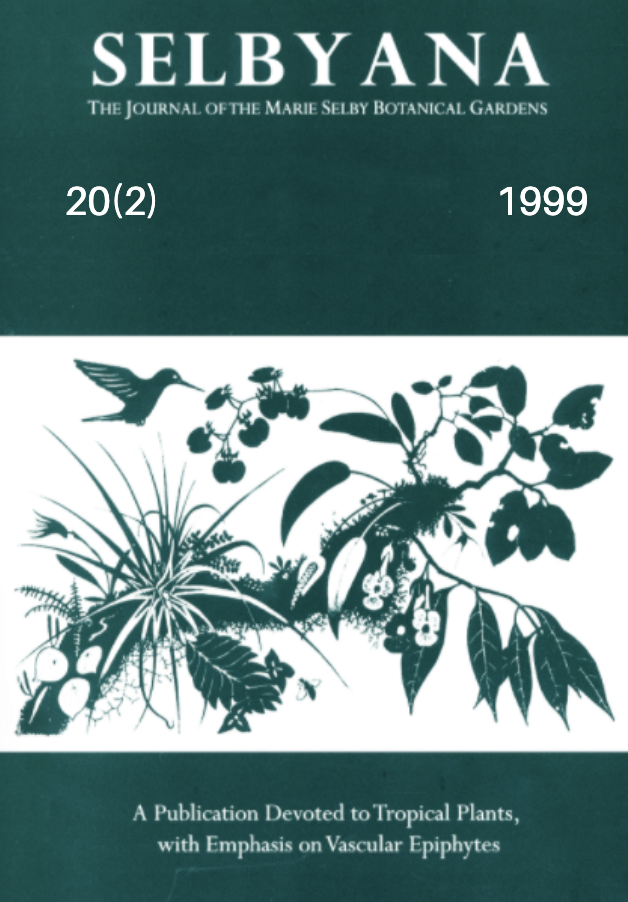Abstract
Nearly 80% of all epiphytic species belong to only four families: Bromeliaceae, Orchidaceae, Polypodiaceae, and Araceae. Adaptations to life in the canopy have been examined extensively for the first three families but not for Araceae. To contribute to the understanding of the vegetative basis for epiphytism in the Araceae, the author studied influences of leaf structure on leaf water relations. Four species representing a hypothetical transition from ground to canopy were selected for study: Rhodospatha oblongata (secondary hemiepiphyte), Anthurium longifolium (shade epiphyte), Philodendron alternans (primary hemiepiphyte), and Philodendron crassinervium (sun epiphyte). Investigations were performed at Reserva Botánica das Aguas Claras, Rio de Janeiro state, southeastern Brazil (22°30'S; 42°30'W). The abiotic conditions along a vertical profile inside the forest indicated increasing drought and exposure toward the canopy. Structural and physiological traits were analyzed of adult plants of all species occurring at different heights on trees. Additionally, young individuals were studied to detect adaptations to establishment in the epiphytic strata. The results showed that higher heights in the forest were conquered with the aid of anatomical and physiological mechanisms, such as increasing leaf succulence, sclerophylly, and epidermal resistance to water loss.
Open Access and Copyright Notice
Selbyana is committed to real and immediate open access for academic work. All of Selbyana's articles and reviews are free to access immediately upon publication. There are no author charges (APCs) prior to publication, and no charges for readers to download articles and reviews for their own scholarly use. To facilitate this, Selbyana depends on the financial backing of the Marie Selby Botanical Gardens, the hard work and dedication of its editorial team and advisory board, and the continuing support of its network of peer reviewers and partner institutions.
Authors are free to choose which open license they would like to use for their work. Our default license is the Creative Commons Attribution-NonCommercial 4.0 (CC BY-NC 4.0). While Selbyana’s articles can be copied by anyone for noncommercial purposes if proper credit is given, all materials are published under an open-access license with authors retaining full and permanent ownership of their work. The author grants Selbyana a perpetual, non-exclusive right to publish the work and to include it in other aggregations and indexes to achieve broader impact and visibility.
Authors are responsible for and required to ascertain that they are in possession of image rights for any and all photographs, illustrations, and figures included in their work or to obtain publication or reproduction rights from the rights holders. Contents of the journal will be registered with the Directory of Open Access Journals and similar repositories. Authors are encouraged to store their work elsewhere, for instance in institutional repositories or personal websites, including commercial sites such as academia.edu, to increase circulation (see The Effects of Open Access).
